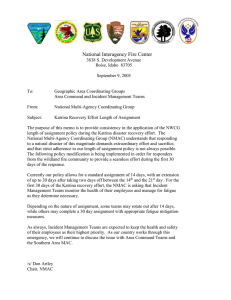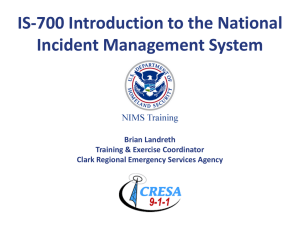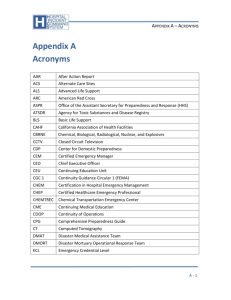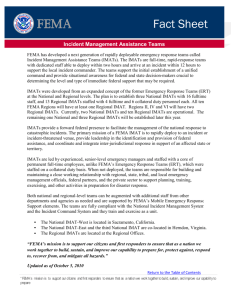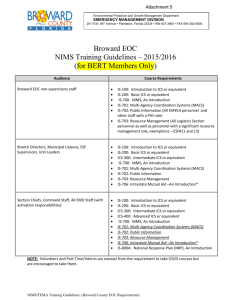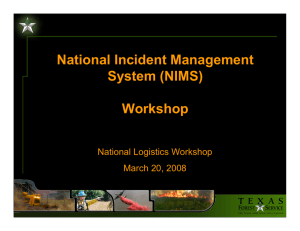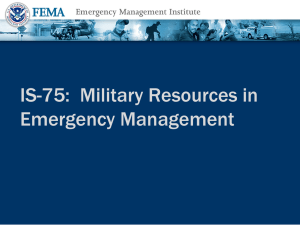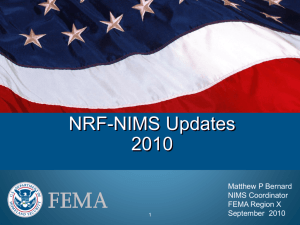701, NIMS Multiagency Coordination System
advertisement
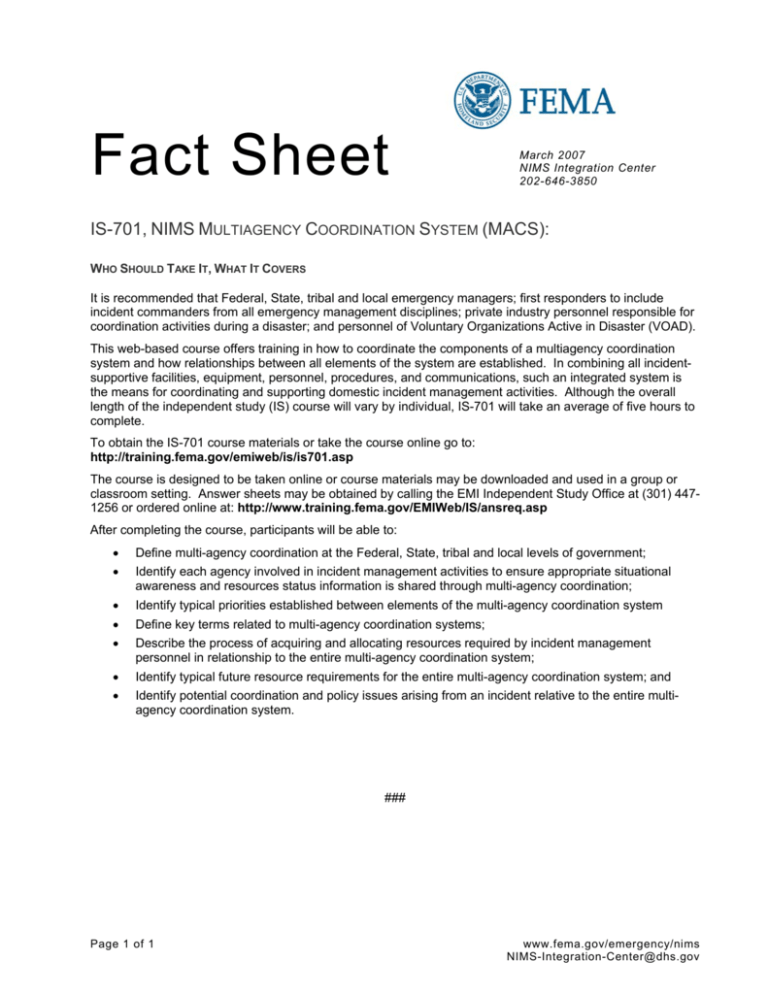
Fact Sheet March 2007 NIMS Integration Center 202-646-3850 IS-701, NIMS MULTIAGENCY COORDINATION SYSTEM (MACS): WHO SHOULD TAKE IT, WHAT IT COVERS It is recommended that Federal, State, tribal and local emergency managers; first responders to include incident commanders from all emergency management disciplines; private industry personnel responsible for coordination activities during a disaster; and personnel of Voluntary Organizations Active in Disaster (VOAD). This web-based course offers training in how to coordinate the components of a multiagency coordination system and how relationships between all elements of the system are established. In combining all incidentsupportive facilities, equipment, personnel, procedures, and communications, such an integrated system is the means for coordinating and supporting domestic incident management activities. Although the overall length of the independent study (IS) course will vary by individual, IS-701 will take an average of five hours to complete. To obtain the IS-701 course materials or take the course online go to: http://training.fema.gov/emiweb/is/is701.asp The course is designed to be taken online or course materials may be downloaded and used in a group or classroom setting. Answer sheets may be obtained by calling the EMI Independent Study Office at (301) 4471256 or ordered online at: http://www.training.fema.gov/EMIWeb/IS/ansreq.asp After completing the course, participants will be able to: • Define multi-agency coordination at the Federal, State, tribal and local levels of government; • Identify each agency involved in incident management activities to ensure appropriate situational awareness and resources status information is shared through multi-agency coordination; • Identify typical priorities established between elements of the multi-agency coordination system • Define key terms related to multi-agency coordination systems; • Describe the process of acquiring and allocating resources required by incident management personnel in relationship to the entire multi-agency coordination system; • Identify typical future resource requirements for the entire multi-agency coordination system; and • Identify potential coordination and policy issues arising from an incident relative to the entire multiagency coordination system. ### Page 1 of 1 www.fema.gov/emergency/nims NIMS-Integration-Center@dhs.gov
